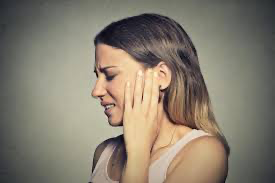
By Sukie Nau, DPT/Owner, NAU Physical Therapy & Wellness
Do you have “ringing in your ears,” and have been told that there’s nothing that can be done for it?
That ringing, or conscious perception of an auditory sensation in the absence of a corresponding external stimulus, is very common. It’s called tinnitus, and it’s a common symptom among 15 percent of the adult population.
Tinnitus causes distress and can decrease your quality of life. It can negatively affect your ability to do intellectual work and other activities.
While often described as a ringing, it may also sound like a clicking, buzzing, hissing, or roaring. The sound may be soft or loud, low or high pitched, and often appears to be coming from one or both ears, or from within the head.
Rather than a disease, tinnitus is a symptom that may result from various underlying causes. It may be generated at any level of the auditory system and structures beyond that system.
The most common cause of tinnitus is hearing damage. Prevention involves avoiding exposure to loud noises for extended periods.
Tinnitus can also be elicited by dysfunctions of the cervical spine or the temporomandibular joint (TMJ).
While there’s no existing medication to directly target tinnitus, treating the underlying cause with physical therapy may lead to improvements. Alleviating these dysfunctions with physical therapy treatment can also decreases complaints of tinnitus.
Treating the cervical spine for tinnitus includes manipulations, exercises, and trigger point treatment for tinnitus severity. In fact, a decrease in tinnitus severity and intensity has been demonstrated after TMJ treatment, following splints, occlusal adjustments, and jaw exercises.
For tinnitus patients at NAU Physical Therapy & Wellness, we recommend:
- Osteopathic manipulations of the cervical spine once a week for two months
- Nine 60-minute sessions of supervised self-stretches of the shoulder, neck, and jaw muscles 3 x per week during a 3-week period
- Post treatment and 3-month follow-up.
Cervical physical therapy (including stabilizing and mobilizing exercises) improves tinnitus complaints in patients with a combination of tinnitus, sensorineural hearing loss, and cervical spine degenerative changes. So, if you have not been able to overcome your tinnitus, physical therapy may be your answer.
For more information, or to schedule a free consultation, call our office today.








